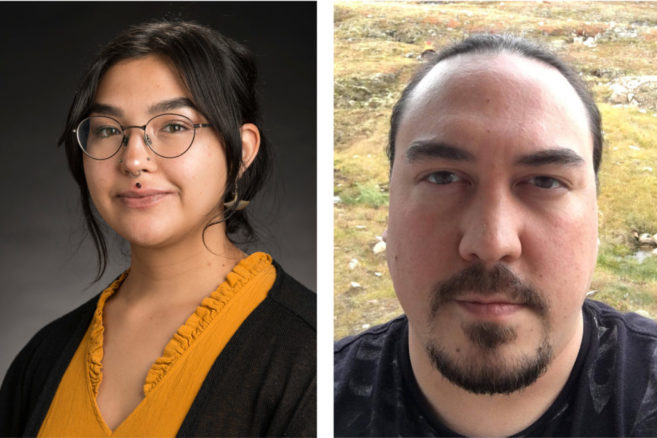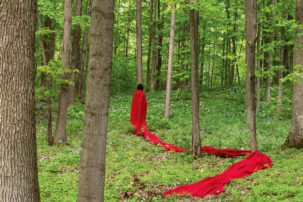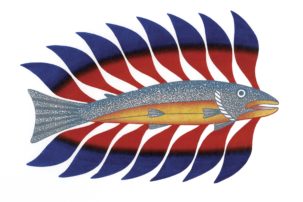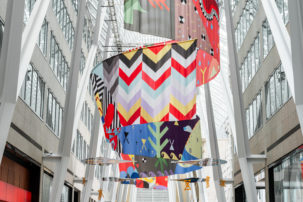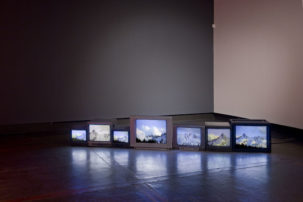This summer the TD North/South Artist Exchange, a Canadian Art program organized in partnership with TD Bank Group, sent two Inuit artists on self-directed residencies for several weeks. The selection process for the participants was facilitated by the TD North/South advisory committee, which consists of mostly Indigenous artists, curators, scholars and writers. In July, Jade Nasogaluak Carpenter and Jesse Tungilik travelled to studios in Alberta and the Northwest Territories, respectively, to expand their artistic practices.
Jade Nasogaluak Carpenter is an Inuvialuit artist and curator who currently resides in Alberta. They chose to return to their roots in Inuvik, Northwest Territories, where they spent a few summers as a child, and work in conjunction with the Great Northern Arts Festival. There, they revisited Uyarak//Stone, a series of soap stone carvings they made in 2017 which aims to question the conventions of Inuit art while reminding viewers that Indigenous peoples exist outside of a settler colonial gaze. Using traditional materials, they portray modern objects. As a contemporary take on Inuit soap stone carvings they created a bottle of Listerine, a Pilot biscuit, a disposable razor and a butt plug.
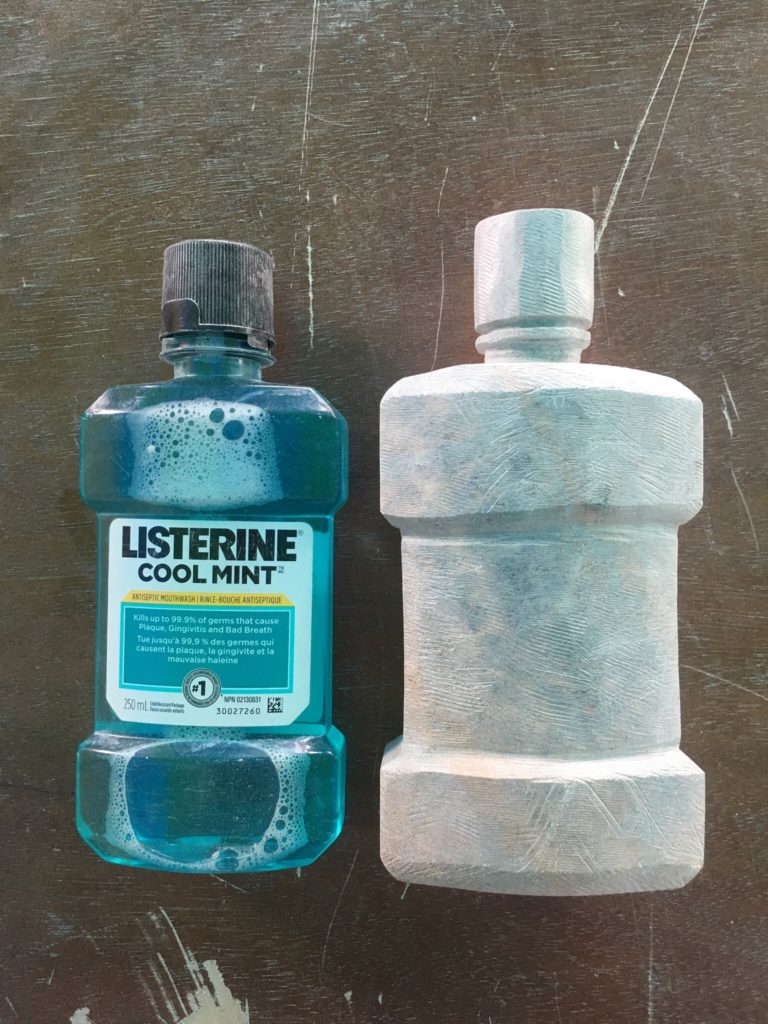 A work by Jade Nasogaluak Carpenter, from the series Uyarak//Stone, 2018. Courtesy the artist.
A work by Jade Nasogaluak Carpenter, from the series Uyarak//Stone, 2018. Courtesy the artist.
Nasogaluak Carpenter expanded on their photography series Untitled (That’s A-Mori) (2016). “The photos I took were a continuation of a project I started about two years ago, of myself wearing a ghost sheet in an urban setting/small town,” they explain. “I use the ghost as a proxy to talk about cultural displacement and diaspora. But it changes the narrative–wearing the ghost costume in Inuvik–because it emphasizes the lack of home base.”
Nasogaluak Carpenter transferred to a new studio space in Inuvik after they finished at the Great Northern Arts Festival, and found an unexpected history.
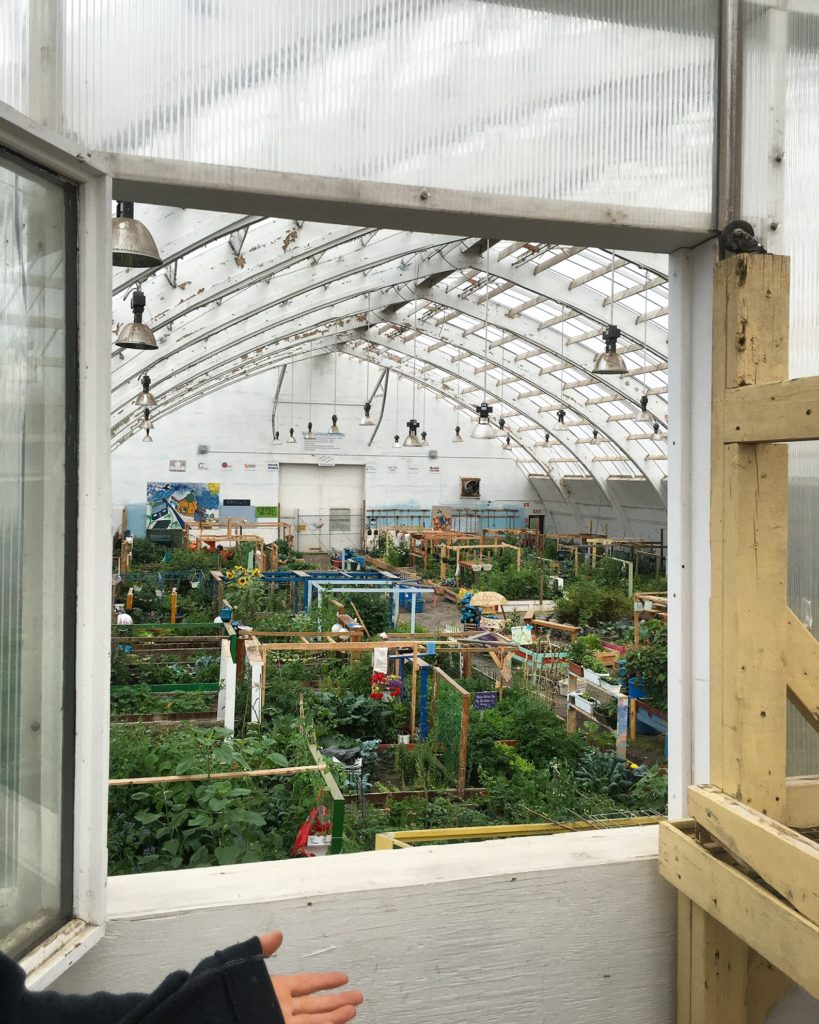 Studio view at Grollier Hall. Photo: Jade Nasogaluak Carpenter.
Studio view at Grollier Hall. Photo: Jade Nasogaluak Carpenter.
“The greenhouse that I was working in used to be a part of Grollier Hall, which was one of two residential schools in Inuvik. And to be totally honest, I really didn’t like being there. The energy in that space was really off and being there was a constant reminder of the colonial history of Canada.”
After the TD North/South Artist Exchange ends, Jade Nasogaluak Carpenter will work on the Inuit Art Centre Curation Project, which takes place in Winnipeg, and partake in a number of group exhibitions.
Jesse Tungilik, an interdisciplinary artist who is based in Iqaluit, Nunavut, travelled to the Banff Centre for Arts and Creativity to participate in the four-week Banff Artist in Residence (BAiR) Summer 2018 Residency, where he is able to use the centre’s resources to develop new aspects of his practice by using mediums he normally does not have access to. “I’m doing a conceptual sculpture series, exploring the cultural and intergenerational impacts of addiction and alcoholism,” says Tungilik. “I’m 3D printing and bronze casting a figure of a person suspended in clear polyester resin inside of a bottle. This is my first time 3D printing, as well as bronze casting. It’s not something that’s available at home so I am very keen to try it while I’m here.”
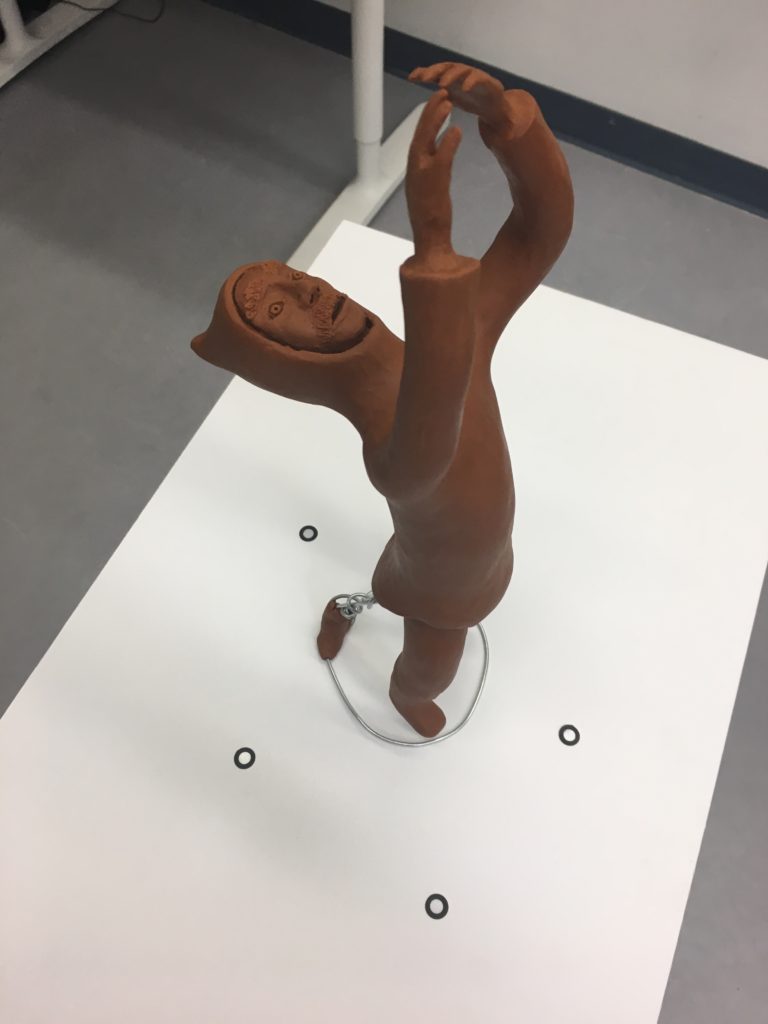 A work by Jesse Tungilik, 2018. Courtesy the artist.
A work by Jesse Tungilik, 2018. Courtesy the artist.
Tungilik is most comfortable working in contemporary and conceptual sculpture. As a child he would visit Matchbox Ceramics Gallery in Rankin Inlet, and from that time his connection to art has continued to flourish.
Until last year, he was the executive director of the Nunavut Arts and Crafts Association. “I’ve very happy to be on the creative side of things again. It’s been something that I’ve been missing for a number of years—I love creating art in general,” explains Tungilik. “But there’s a lot that needs to be done in the arts administration side—especially in the North. I still try to be involved but it’s a much different work vibe.”
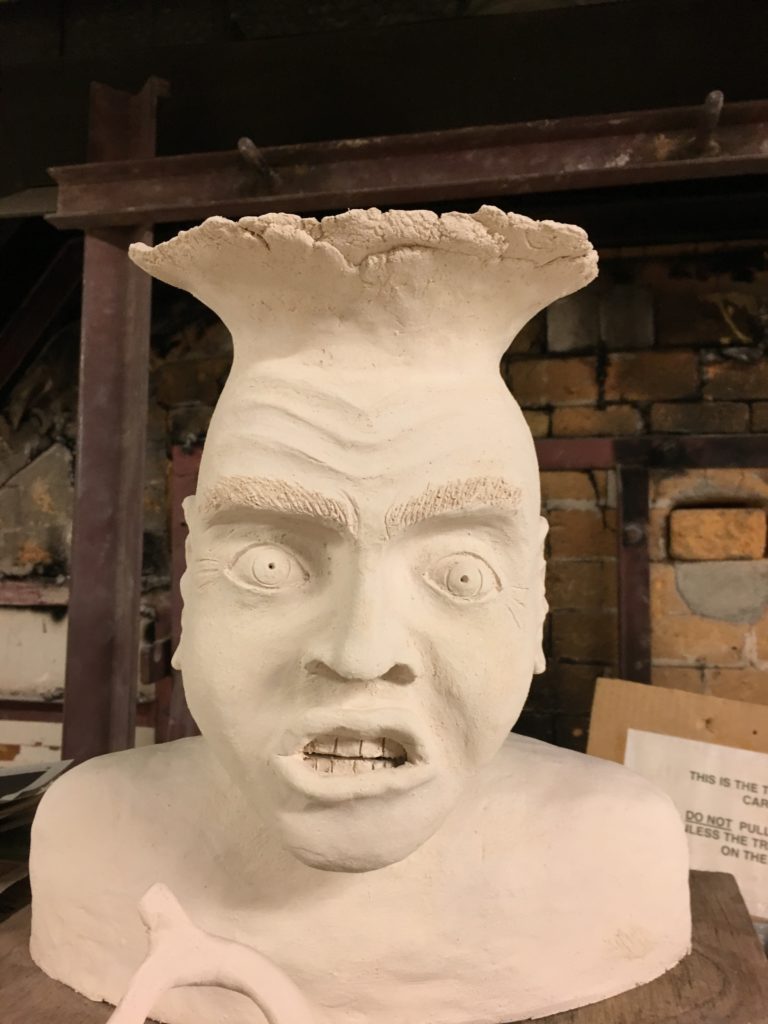 A work by Jesse Tungilik, 2018. Courtesy the artist.
A work by Jesse Tungilik, 2018. Courtesy the artist.
After the BAiR Residency, Jesse Tungilik will work as a cultural educator and continue his collaboration with a group that was just awarded a Social Sciences and Humanities Research Council (SSHRC) talent grant, which will provide him more opportunities to further his artistic practice.
The TD North/South Artist Exchange offers an opportunity to bridge the gap between Canada’s northern and southern regions by arranging residency programs for artists based in these locations. This Artist Exchange provides access to varying studio programs in order to contribute to the development of their skill sets and creative practices.
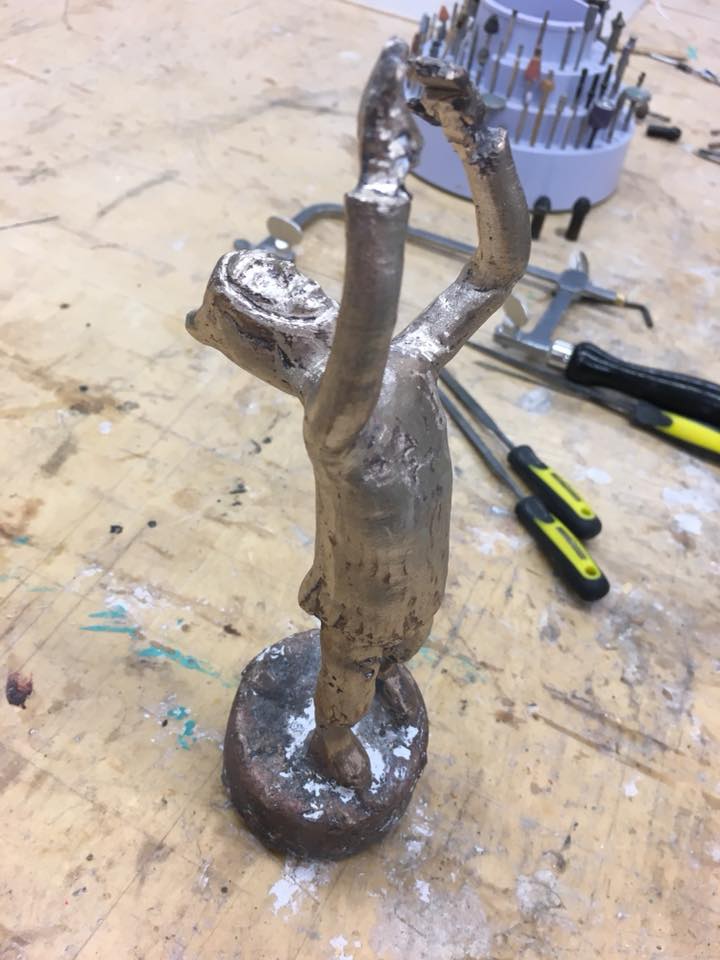
A work by Jesse Tungilik, 2018. Photo: Facebook.

Photo: Jade Nasogaluak Carpenter.

Jade Nasogaluak Carpenter, from the series Uyarak//Stone, 2018. Courtesy the artist.

Jade Nasogaluak Carpenter at the Great Northern Arts Festival, 2018. Photo: Amy Badgley.

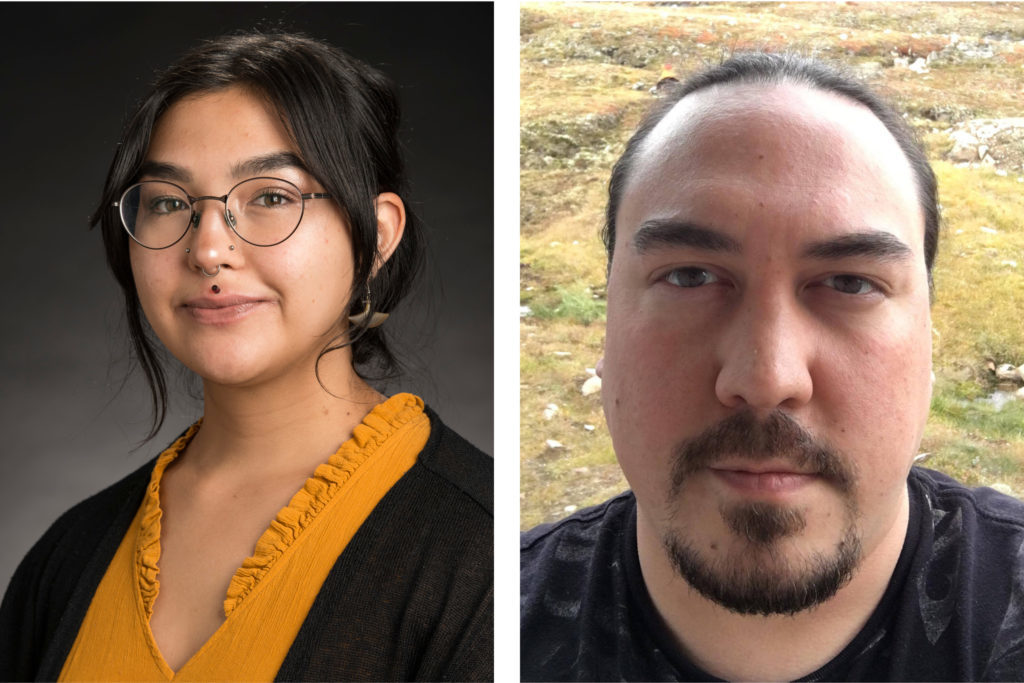 Jade Nasogaluak Carpenter, photo: Chelsea Yang-Smith; Jesse Tungilik, photo: Jesse Tungilik.
Jade Nasogaluak Carpenter, photo: Chelsea Yang-Smith; Jesse Tungilik, photo: Jesse Tungilik.
